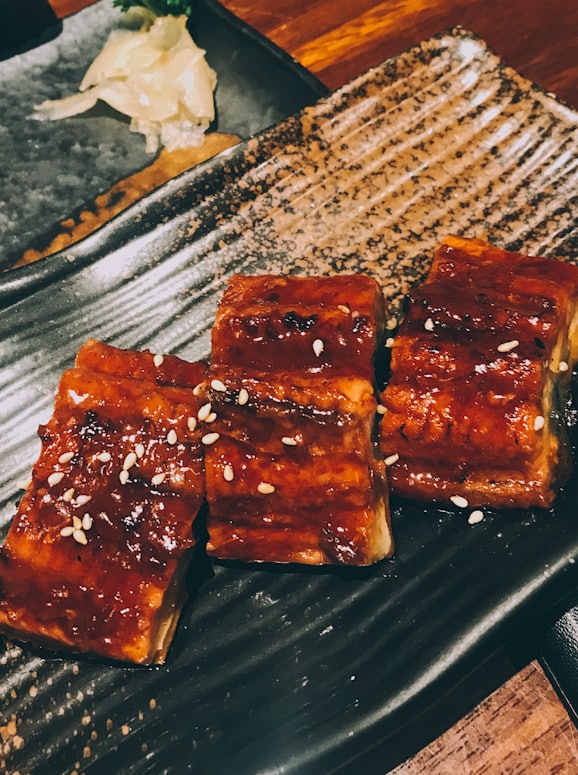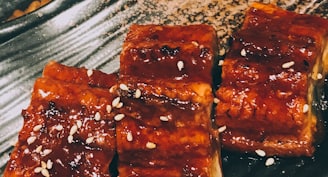

The fate of the eel
On how the Japanese are coping with the heat
One day, when I was doing grocery shopping in my local supermarket, I noticed a large display of some sort. The fact that it was located in the fish department surprised me a little, but I decided to take a look. It turned out that the whole display was dedicated to eels. Larger and smaller pieces of fish were presented next to ready-made bento sets. Well, it turns out that the Japanese people believe that unagi (鰻, freshwater eel) is the perfect dish for hot days, replenishing lost strength. At first, I thought it was a hoax. However, upon closer examination... it makes a lot of sense. Eel meat contains a lot of vitamins and minerals, which can be lost very quickly in hot weather. Eating eel would make sense if not the fact that eating this delicacy can be associated with problems.... of a moral nature.
The freshwater eel population is declining year by year. This trend has continued for so long that the Japanese eel has been placed on the list of endangered species! So far, sales have not stopped, and although the price of this fish has gone up sharply, the question is whether we should find this species of fish on sale at all? The Japanese government is trying to combat the problem by only allowing licensed fishermen to cath the eel, and limiting the catch to juvenile specimens only. However, when faced with the fact that Japan consumes two-thirds of all eels worldwide, I got the impression that these restrictions are not having much of an effect... Freshwater eels are sometimes replaced with anago (穴子) - saltwater eels - with not much of success.


This is how typical serving of eel looks like.
Eel is not the only food to help in warm weather. Another popular (and definitely more environmentally friendly) meal is somen (素麺, そうめん). It's thin, cold wheat noodles, served with a chilled sauce. And while we're on the subject... Also the non-Japanese restaurants offer their own ways to cool down. I was lucky enough to live near several small eateries. One of them - a Vietnamese restaurant- serves a cold variation of pho soup! It works just as well as somen :)
As you might expect, ice cream are also very popular in Japan. For the most part, the ice cream is exactly the same as in Europe, but occasionally you may come across some curiosities. One of these is kakigori (かき氷). It is nothing more than grated ice, which is poured over juice/syrup/condensed milk, often topped with fruit. Of course, this type of dessert may not necessarily appeal to gourmets as it tastes... well... like a piece of ice poured over juice ;) No less, it cools down effectively!
Another popular snack is chilled watermelon. I've tried it many times and so far it's probably my favourite way to cool down. Not only does it hydrate, it also tastes great! However, not once have I had the chance to buy a whole watermelon... And it wasn't because I couldn't eat the whole thing on my own. It is more a question of the price. Watermelons (like many fruits) are very expensive in Japan. For a piece of fruit, I usually paid around 400 円 ( the Japanese use 円 symbol sometimes instead of the ¥). The whole fruit costs from 1000 円 to as much as 4000 円. Fortunately, other types of food are much cheaper here....
Besides the food there are also other methods which help to survive the warm days. One of them is the custom of pouring water on the ground/sidewalk. However, it is a fading custom. Pouring water on the pavement is supposed to cool the surface, and bind the dust. For the latter, yes, it can probably help. However, as for the former... I am not so sure how helpful it is. Especially when you consider the already high humidity. However, as we all know: Every country has its own customs!